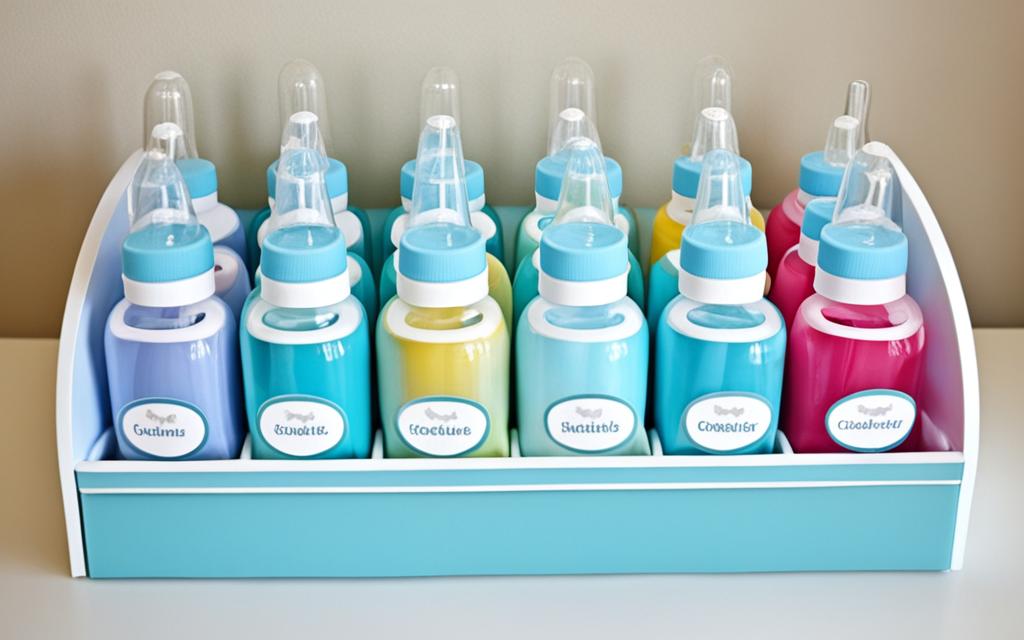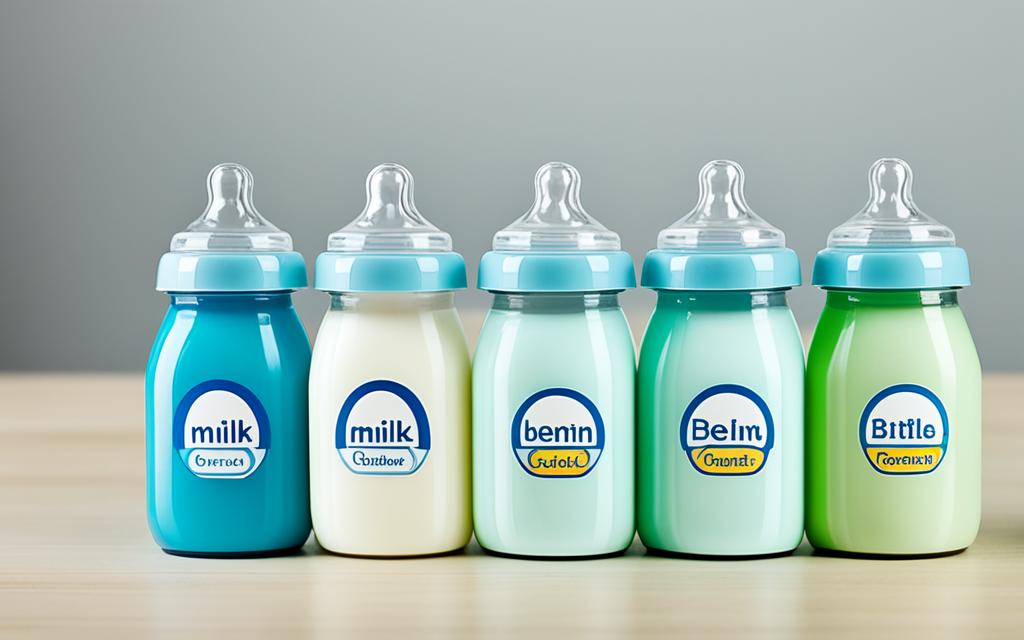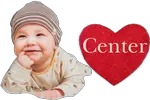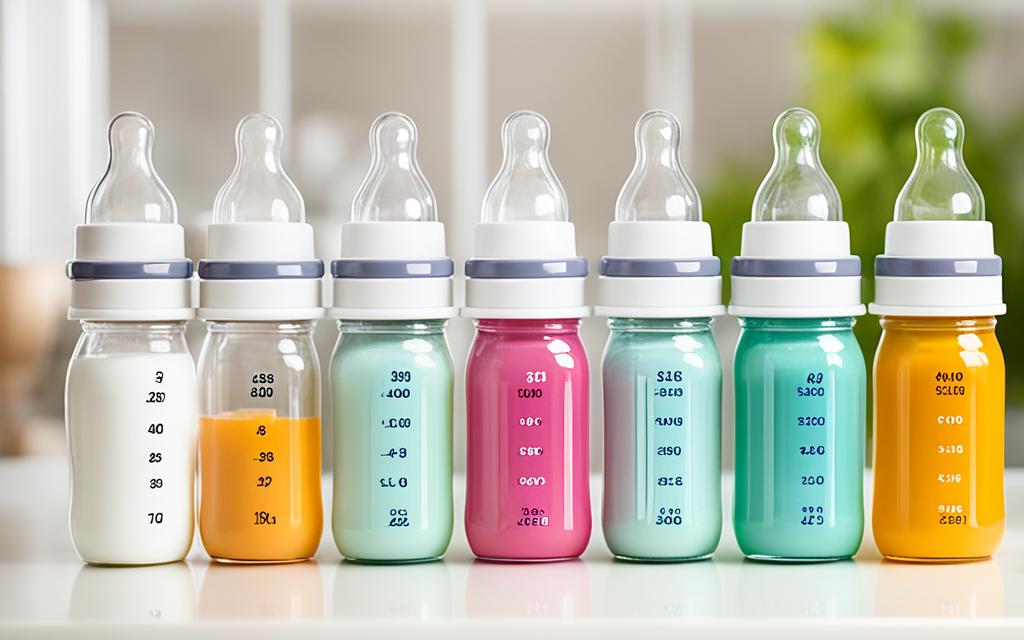Welcome to our comprehensive guide on determining how many baby bottles do I need for your little one. As a parent, it’s essential to have the right quantity of bottles to meet your baby’s feeding needs while ensuring convenience and ease of use. In this article, we will explore various factors to consider when determining the ideal number of baby bottles for your baby’s age, feeding habits, and personal preferences. Whether you are a first-time parent or looking to update your bottle collection, this guide will provide you with valuable insights and recommendations.
Key Takeaways:
- Understanding your baby’s feeding frequency and bottle usage patterns is crucial in calculating the right number of baby bottles.
- Factors such as breastfeeding habits, bottle-washing preferences, and the availability of bottle sterilization options should be considered when determining the quantity of baby bottles you need.
- Newborns have specific bottle requirements, including frequent feedings and the need for smaller bottle sizes.
- Choosing the right baby bottle size based on your baby’s age and feeding habits ensures comfortable and efficient feedings.
- Effective bottle management strategies, such as paced bottle feeding and proper rotation, can simplify your daily routine.
Calculating Your Baby Bottle Needs
When it comes to ensuring your little one is well-fed and nourished, it’s essential to calculate your baby’s bottle needs accurately. By considering factors such as age, feeding frequency, and bottle usage patterns, you can determine the optimal number of bottles to have on hand.
The first factor to consider is your baby’s age. Newborns typically require smaller feedings more frequently, while older babies may have larger feedings spaced further apart. Understanding your baby’s age-related feeding habits will help you estimate the number of bottles they may need in a day.
Feeding frequency is another crucial aspect to consider. Some babies feed more frequently than others, while some may have more substantial appetites. By observing your baby’s feeding patterns and consulting with your pediatrician, you can determine the average number of feedings per day and estimate the number of bottles required.
Bottle usage patterns also play a role in calculating your baby’s bottle needs. Some parents prefer to use a fresh bottle for each feeding, while others opt for bottle rotation or washing after every use. Understanding your preferred bottle usage method will help you determine the appropriate number of bottles to have readily available.
Calculating your baby’s bottle needs may seem complex, but with a little observation and consideration of these factors, you can ensure you always have an adequate supply on hand. To help you visualize the calculations, here’s a simple chart:
Baby’s Age |
Feeding Frequency |
Bottle Usage Patterns |
Estimated Bottles Needed |
|---|---|---|---|
| Newborn | 8-12 feedings per day | Fresh bottles for every feeding | 10-12 bottles |
| 3-6 months | 5-8 feedings per day | Bottle rotation or washing after every use | 7-9 bottles |
| 6+ months | 4-6 feedings per day | Bottle rotation or washing after every use | 5-7 bottles |
Note: The above table provides rough estimates and may vary depending on your baby’s specific needs and preferences. It’s always a good idea to consult with your pediatrician for personalized guidance.
By taking the time to calculate your baby’s bottle needs, you can ensure a smooth and convenient feeding routine, without the stress of running out of bottles. Now that you have a solid understanding of how to calculate, let’s move on to the factors you need to consider when determining the quantity of baby bottles in Section 3.
Factors to Consider When Determining Quantity
When it comes to determining the quantity of baby bottles you need, several important factors should be taken into consideration. By understanding these factors, you can ensure that you have the necessary baby bottle essentials to meet your little one’s needs.
Breastfeeding Habits
One crucial factor to consider is your baby’s breastfeeding habits. If you plan to exclusively breastfeed your baby, you may not need as many bottles as someone who relies more heavily on bottle feeding. However, having a few bottles on hand can still be beneficial for times when you might need to supplement with formula or breast milk.
Bottle Washing Preferences
Your bottle washing preferences can also impact the quantity of bottles you require. If you prefer to wash bottles immediately after each use, you may need fewer bottles. However, if you prefer to wash bottles in larger batches, you may want to have more bottles available to avoid running out during the cleaning process.
Bottle Sterilization Options
Consider the availability of bottle sterilization options when determining how many bottles you need. If you have easy access to sterilizing equipment, you might require fewer bottles since you can quickly clean and sterilize them. On the other hand, if sterilizing bottles is more time-consuming or inconvenient, having a larger quantity of bottles can help ensure you always have a sterilized bottle ready for use.
By taking these factors into account, you can determine the optimal quantity of baby bottles you need to meet your baby’s feeding requirements.
| Factors to Consider | Recommended Number of Bottles |
|---|---|
| Exclusively breastfeeding | 2-4 bottles for supplementing |
| Washing bottles immediately after each use | 4-6 bottles |
| Washing bottles in larger batches | 6-8 bottles |
| Quick and easy sterilization | 4-6 bottles |
| Time-consuming or inconvenient sterilization | 6-8 bottles |
Remember, these are general guidelines, and every baby is different. It’s always a good idea to have a few extra bottles on hand, just in case. Additionally, as your baby grows and their feeding habits change, you may need to adjust the quantity of bottles accordingly.
Meeting Newborn Baby Bottle Requirements
When it comes to meeting the requirements of newborns regarding baby bottles, there are several important factors to consider. Newborns have unique feeding needs, and choosing the right bottle size, type, and frequency of feedings is crucial for their well-being and development.
During the first few weeks of life, newborns require frequent feedings. On average, they need to be fed every 2 to 3 hours, which amounts to about 8 to 12 feedings per day. These frequent feedings are necessary to support their rapid growth and provide the necessary nutrients for a healthy start.
Size and Type of Bottles
When it comes to the size of bottles for newborns, smaller is better. Using bottles with a smaller capacity, such as 4-ounce bottles, is recommended. Newborns have small stomachs and are unable to consume large amounts of milk at once. Using smaller bottles ensures that you offer them the appropriate amount of milk without overwhelming their tiny tummies.
In addition to the size, consider using bottles specifically designed for newborns. These bottles often come with a slow-flow nipple, which mimics the natural flow of breast milk. Slow flow nipples help prevent overfeeding, reduce the risk of gas and colic, and allow newborns to feed at their own pace.
To manage their feeding needs during the early stages, it is advisable to have at least 6 to 8 bottles on hand. This number allows for frequent feedings throughout the day, while also allowing time for proper cleaning and sterilization.
Managing Feeding Needs
It’s important to establish a routine when it comes to feeding your newborn. Creating a feeding schedule can help ensure that they are getting enough milk and are on track with their growth. By following a consistent feeding routine, you can also help regulate their sleep patterns and avoid unnecessary interruptions during the night.
When preparing bottles for your newborn, it’s essential to prioritize hygiene and cleanliness. Always wash bottles, nipples, and other feeding accessories with warm soapy water or use a dishwasher. Sterilizing the bottles regularly is also crucial for maintaining a healthy feeding environment for your little one.
“Using smaller bottles ensures that you offer them the appropriate amount of milk without overwhelming their tiny tummies.”
By meeting the specific requirements of newborns when it comes to baby bottles, you can ensure their comfort, promote healthy feeding habits, and support their overall development. Remember to consult with your pediatrician for personalized guidance and advice based on your baby’s individual needs.
Choosing the Right Baby Bottle Size
When it comes to baby bottle essentials, selecting the right size is crucial for your little one’s comfort and feeding experience. Different bottle sizes cater to your baby’s age and feeding habits, ensuring optimal nutrition and ease of use.
It’s important to note that as your baby grows, their nutritional needs evolve, and so should their bottle size. Using the wrong size can lead to discomfort, gas, and even difficulties in feeding.
Exploring Different Bottle Sizes
Baby bottles come in a variety of sizes, typically ranging from 4 ounces to 10 ounces or more. Below, we’ve listed the standard sizes and the age ranges they commonly correspond to:
| Bottle Size (ounces) | Recommended Age Range |
|---|---|
| 4 | Newborns and young infants |
| 6 | 3-6 months |
| 8 | 6-12 months |
| 10 or more | Toddlers |
Keep in mind that these age ranges are general guidelines, and every baby is unique. Your little one’s feeding habits and preferences may also influence the suitable bottle size.
Matching Bottle Size with Feeding Habits
Understanding your baby’s feeding habits can help you make an informed choice regarding the appropriate bottle size:
- Small or frequent feedings: If your baby prefers smaller, more frequent feedings, a smaller bottle size, such as 4 or 6 ounces, may be appropriate.
- Larger or less frequent feedings: For babies who prefer larger or less frequent feedings, a larger bottle size, such as 8 or 10 ounces, may be more suitable.
Keep in mind that babies’ feeding habits can change over time, so it’s important to assess their needs periodically and adjust the bottle size accordingly.

“Choosing the right baby bottle size is crucial for your baby’s comfort and feeding experience. It ensures optimal nutrition and ease of use.”
By selecting the appropriate baby bottle size, you can ensure that your little one’s feeding experience is enjoyable and hassle-free. Remember to consider their age, feeding habits, and comfort when making this important decision.
Strategies for Managing Bottle Usage
When it comes to baby bottle essentials, effectively managing your baby’s bottle usage is key. By implementing the right strategies, you can ensure that feeding time is convenient, hygienic, and enjoyable for both you and your little one. Here are some tips and techniques to help you streamline your bottle routine:
Paced Bottle Feeding
One strategy that can greatly benefit your baby’s feeding experience is paced bottle feeding. This technique mimics the natural flow of breastfeeding and helps prevent overfeeding, gas, and discomfort. To practice paced bottle feeding:
- Hold your baby in an upright position.
- Keep the bottle horizontal, allowing your baby to control the flow of milk.
- Pause frequently during feeding to give your baby breaks.
- Observe your baby’s cues and stop feeding when they show signs of fullness.
Paced bottle feeding promotes healthy digestion and fosters a closer bonding experience between you and your little one.
Introducing Breast Milk Storage Bags
If you’re a breastfeeding mom who occasionally uses bottles to feed your baby, investing in breast milk storage bags can be a game-changer. These bags allow you to express and store breast milk, ensuring that it remains fresh and easily accessible. Here’s how to incorporate breast milk storage bags into your routine:
- Express breast milk into sterilized bottles.
- Pour the expressed milk into individual breast milk storage bags.
- Seal the bags tightly and label them with the date and time of expression.
- Store the bags in the refrigerator or freezer until needed.
- When it’s time to feed your baby, simply thaw the desired amount of breast milk from the storage bag and transfer it into a clean bottle.
Introducing breast milk storage bags not only ensures the freshness of your breast milk but also makes bottle preparation quick and convenient.
Rotating Bottles for Freshness and Convenience
Rotating your baby’s bottle collection is another useful strategy for managing bottle usage. By having multiple bottles on hand and rotating their use, you can promote freshness, cleanliness, and efficiency. Here’s how to implement the bottle rotation system:
“Rotating your baby’s bottle collection is a great way to ensure that each bottle is thoroughly cleaned and properly maintained.”
| Step | Action |
|---|---|
| 1 | Start with a set of clean, sterilized bottles. |
| 2 | Use one bottle for each feeding session, ensuring it is properly cleaned and sterilized after each use. |
| 3 | Once all bottles have been used, wash and sterilize the entire collection. |
| 4 | Begin the next feeding cycle with a fresh set of bottles. |
| 5 | Continue rotating the bottles to maintain cleanliness and freshness. |
By rotating your baby’s bottle collection, you can rest assured that each bottle is thoroughly cleaned and maintained, providing optimal hygiene and convenience.
Implementing these strategies for managing bottle usage will simplify your daily routine and ensure that your baby’s feeding experience is safe, comfortable, and enjoyable for both of you.
Advantages of Having Extra Baby Bottles
When it comes to baby bottles, having a few extra on hand can be incredibly beneficial. Not only does it provide convenience, but it also offers several advantages that can simplify your daily routine and ensure that your little one is always well-fed. Here are some reasons why having an optimal number of baby bottles is essential:
1. Constant Availability:
By having extra baby bottles, you can ensure a constant supply of clean bottles, especially during busy days when you may not have enough time for immediate cleaning and sterilization. This means that you’ll always have a bottle ready to go whenever your baby needs feeding, saving you time and reducing stress.
2. Easier Outings:
When you’re on the go, having extra baby bottles can make outings much smoother. You can pack multiple bottles with pre-measured formula or breast milk, eliminating the need to carry bulky containers. This way, your baby can enjoy their meal without any interruptions, regardless of where you are.
3. Support for Breastfeeding Moms:
If you’re a breastfeeding mom who occasionally uses bottles for supplementing or storing breast milk, having extra baby bottles can be a game-changer. It allows you to store multiple portions of breast milk at once, helping you efficiently manage your milk supply and ensuring that your baby always has access to nourishing breast milk even when you’re away.
4. Easy Transition:
As your baby grows, their feeding habits and preferences may change. By having a range of different bottles available, you can easily transition from one type to another without causing any disruption to your baby’s feeding routine. This flexibility ensures that your baby remains comfortable and satisfied during their feeding sessions.
Overall, having extra baby bottles provides flexibility, convenience, and peace of mind. It allows you to navigate the unpredictable demands of parenthood with ease and ensures that your baby’s feeding needs are always met. So, consider stocking up on a few extra bottles to make your parenting journey a little smoother and more enjoyable.

Using a Baby Bottle Count Calculator
When it comes to determining the ideal number of baby bottles you’ll need, it can be a bit overwhelming. Factors such as your baby’s age, feeding habits, and lifestyle can all play a role in determining the quantity that best suits your needs. This is where a baby bottle count calculator can come in handy!
Meet our user-friendly and convenient Baby Bottle Count Calculator. This tool is designed to take the guesswork out of figuring out the optimal number of bottles for your specific situation. With just a few simple inputs, you can get an accurate estimate that will help you plan and prepare accordingly.
Here’s how to use our Baby Bottle Count Calculator effectively:
- Step 1: Enter your baby’s age in months. This allows the calculator to factor in your baby’s changing feeding needs as they grow.
- Step 2: Indicate the average number of feedings your baby has per day. This helps the calculator determine the frequency at which you’ll need clean bottles available.
- Step 3: Select your preference for bottle cleaning frequency. Whether you prefer washing after every use or using a dishwasher, this information helps the calculator determine if additional bottles are needed.
- Step 4: Choose whether you’ll be using bottle sterilization. If you opt for sterilization, this input ensures the calculator accounts for any additional bottles you may require.
- Step 5: Finally, the Baby Bottle Count Calculator will provide you with an estimate of the optimal number of bottles you’ll need based on the information you’ve provided.
By using our Baby Bottle Count Calculator, you’ll be able to confidently stock up on the right number of bottles, ensuring you have enough for your baby’s needs without excess clutter. It’s a simple yet powerful tool that can save you time, money, and stress in the long run.
Harness the power of technology to streamline your baby bottle planning. Try our Baby Bottle Count Calculator today and take the first step towards a well-prepared feeding journey!
Conclusion
After considering all the key factors, it is evident that baby bottle essentials play a crucial role in providing convenience and flexibility for both parents and babies. Determining the optimal number of baby bottles depends on various factors such as feeding habits, bottle washing preferences, and the availability of bottle sterilization options.
For newborns, it is recommended to have around 4 to 6 small-sized bottles to meet their frequent feeding needs. As your baby grows, you can gradually increase the number of bottles to ensure a consistent supply for their growing appetite. It is also important to choose the right bottle size based on your baby’s age and feeding habits.
To effectively manage bottle usage, consider implementing strategies like paced bottle feeding and rotating bottles to maintain freshness. Having extra baby bottles can provide added convenience, especially during outings or when unexpected situations arise.
In conclusion, it is crucial to understand the baby bottle essentials and consider your baby’s individual needs when determining the optimal number of bottles. By doing so, you can ensure a smooth and hassle-free feeding routine while providing the necessary nourishment for your little one.
FAQ
How many baby bottles do I need?
The number of baby bottles you need depends on various factors such as your baby’s age, feeding habits, and your personal preferences. As a general guideline, it is recommended to have at least 4 to 6 bottles in newborn size (4-5 ounces) and an additional 4 to 6 bottles in a larger size (8-9 ounces) as your baby grows. This way, you’ll always have clean bottles available for feeding and won’t need to wash them as frequently.
How do I calculate my baby’s bottle needs?
To calculate your baby’s bottle needs, consider factors such as their age, feeding frequency, and bottle usage patterns. Newborns generally feed every 2 to 3 hours, so having about 6 to 8 bottles in the smaller size (4-5 ounces) should be sufficient. As your baby grows and their feeding frequency decreases, you may need fewer bottles. It’s also a good idea to have a few extra bottles on hand in case of emergencies or unexpected situations.
What factors should I consider when determining the quantity of baby bottles I need?
When determining the quantity of baby bottles you need, consider factors such as your baby’s breastfeeding habits, your preferred bottle washing routine, and the availability of bottle sterilization options. If you plan to predominantly breastfeed, you may need fewer bottles compared to if you plan to exclusively bottle-feed. Additionally, if you have a dishwasher or access to easy sterilization methods, you may be able to manage with fewer bottles that can be washed and sterilized more frequently.
What are the newborn baby bottle requirements?
Newborns typically feed every 2 to 3 hours, so having around 6 to 8 bottles in the smaller size (4-5 ounces) is recommended. It’s important to choose a bottle that mimics breastfeeding to avoid nipple confusion. Look for bottles with slow-flow nipples that allow your baby to control the milk flow. As your baby grows and their feeding patterns change, you may need to transition to larger bottles with faster-flow nipples.
How do I choose the right baby bottle size?
The right baby bottle size depends on your baby’s age and feeding habits. For newborns, choose smaller bottles (4-5 ounces) to accommodate their smaller feeding amounts. As your baby grows and consumes more milk, you may need to transition to larger bottles (8-9 ounces). It’s important to choose a bottle size that allows your baby to finish their feedings comfortably without wasting excess milk.
What are some strategies for managing baby bottle usage?
To effectively manage baby bottle usage, consider paced bottle feeding to prevent overfeeding and to promote better digestion. Additionally, introducing breast milk storage bags can be useful for storing excess milk and ensuring freshness. Rotating bottles and nipples regularly can also help to maintain their cleanliness and condition. It’s always a good idea to have a few extra bottles on hand for convenience and emergencies.
What are the advantages of having extra baby bottles?
Having extra baby bottles can be advantageous in many situations. It ensures that you always have clean bottles available for feeding, even if you haven’t had the chance to wash them immediately after use. Extra bottles can also come in handy when traveling or when your baby’s feeding routine changes unexpectedly. Additionally, having spare bottles can provide peace of mind, knowing that you are well-prepared for any situation.
How can I use a baby bottle count calculator to determine the ideal number of bottles?
A baby bottle count calculator can be a helpful tool in determining the ideal number of bottles for your specific needs. Simply input information such as your baby’s age, feeding frequency, and preferred bottle size. The calculator will then provide you with a recommended quantity of bottles to have on hand. Remember to consider other factors such as your personal preferences and lifestyle when finalizing your baby bottle count.








